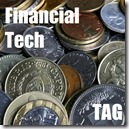University of Michigan’s Consumer Sentiment Survey and Phenomenon Called Heuristics – Guide Rock Weekly Market Commentary May-20 FT029
 Much like elementary school children trying to capture the attention of someone they have a crush on, the American economy sent lots of mixed signals last week.
Much like elementary school children trying to capture the attention of someone they have a crush on, the American economy sent lots of mixed signals last week.
Conflicting reports emerged about consumer sentiment during the week. The Conference Board, a non-profit research organization, reported consumers remained somewhat pessimistic about the direction of the economy. In contrast, the University of Michigan’s consumer sentiment survey rose to a six-year high, according to ABC News. The Index moved from 76.4 in April to 83.7 in May indicating consumers are feeling more confident about the economy.
| Listen Mobile: |
Audio Only |
On the employment front, more people filed first-time unemployment claims last week than had filed the week before; however, claims remained well below the levels experienced from mid-2008 to 2011. Additionally, data shows during the past six months the average length of unemployment has dropped, the number of hours worked has risen, and earnings have increased.
Messages from the Federal Reserve were more consistent than economic data. Members of the Philadelphia, Dallas, and San Francisco Federal Reserve Banks suggested it may be time to begin slowing quantitative easing. Currently, the Federal Reserve’s quantitative easing efforts have it buying about $85 billion of Treasuries and mortgage-backed securities each month as it works to support the economy. According to reports, quantitative easing could slow to a stop during 2013. Fed comments helped push yields on 10-year Treasuries higher for the week.
 Stock markets remained undaunted by uncertain economic conditions and the prospect that quantitative easing may end soon. The Dow Jones Industrial Average and the Standard & Poor’s 500 Indices surged to new highs last week. Markets rallied across the pond, as well, with some major European stock indices reaching levels last seen five or more years ago, according to Reuters.
Stock markets remained undaunted by uncertain economic conditions and the prospect that quantitative easing may end soon. The Dow Jones Industrial Average and the Standard & Poor’s 500 Indices surged to new highs last week. Markets rallied across the pond, as well, with some major European stock indices reaching levels last seen five or more years ago, according to Reuters.
| 1-Week | Y-T-D | 1-Year | 3-Year | 5-Year | 10-Year |
Standard & Poor’s 500 (Domestic Stocks) | 2.1% | 16.9% | 27.8% | 13.6% | 3.2% | 6.1% |
10-year Treasury Note (Yield Only) | 2.0 | N/A | 1.7 | 3.5 | 3.8 | 3.5 |
Gold (per ounce) | -4.1 | -19.2 | -11.9 | 3.5 | 8.6 | 14.3 |
DJ-UBS Commodity Index | -0.2 | -5.3 | -2.5 | 1.7 | -9.3 | 1.1 |
DJ Equity All REIT TR Index | 1.9 | 18.2 | 31.8 | 19.2 | 7.1 | 12.6 |
Notes: S&P 500, Gold, DJ-UBS Commodity Index returns exclude reinvested dividends (gold does not pay a dividend) and the three-, five-, and 10-year returns are annualized; the DJ Equity All REIT TR Index does include reinvested dividends and the three-, five-, and 10-year returns are annualized; and the 10-year Treasury Note is simply the yield at the close of the day on each of the historical time periods.
Sources: Yahoo! Finance, Barron’s, djindexes.com, London Bullion Market Association.
Past performance is no guarantee of future results. Indices are unmanaged and cannot be invested into directly. N/A means not applicable.
HEURISTIC IS JUST ANOTHER NAME FOR A SHORTCUT. When academics look to psychology and economics to explain why people make financial decisions the way they do, it’s called behavioral finance. This field of study describes a phenomenon called “heuristics.” In general, a heuristic is a mental shortcut that lets someone solve a problem using a rule of thumb. Heuristics may be handy, but they may not take you exactly where you mean to go. For example, consider some of the shortcuts investors have developed to predict the direction of the stock market. You may have heard of the:
- Hemline Index: In 1926, George Taylor suggested the length of women’s skirts was a useful market predictor. Short hemlines were a positive predictor while long hemlines were a negative predictor. Taylor later became Professor of Industrial Relations at Wharton and became known as the father of American Arbitration.
- Super Bowl Indicator: Washington and Lee professor George Kester introduced the idea the Super Bowl winner could predict market performance. His theory was the market would move higher for the year when an original National Football League team won the Super Bowl and lower when an original American Football League team won.
- Presidential Election Cycle Theory: The idea behind this gem is the stock market follows a predictable pattern during each American President’s term. The year after an election produces the weakest stock market performance while the third year offers the strongest.
Anyone who remembers The Chicago Daily Tribune’s headline, Dewey Beats Truman, or CNN and Fox News’ headlines indicating the Supreme Court struck down the individual mandate, knows predicting the future can be challenging. In general, it’s a good idea to remember that the drivers of market performance tend to be economic factors, investor sentiment, and company fundamentals.
Weekly Focus – Think About It
“The pursuit of truth and beauty is a sphere of activity in which we are permitted to remain children all our lives.”
—Albert Einstein, theoretical physicist
Best regards,
ANDREW HUNT CFP®
President of Guide Rock Capital Management, Inc.
402.938.6016
1001 Gallup Drive
Omaha, NE 68102
Communication | Woo | Achiever | Ideation | Relator
P.S. Please feel free to forward this commentary to family, friends, or colleagues. If you would like us to add them to the list, please reply to this e-mail with their e-mail address and we will ask for their permission to be added.
Securities offered through Shareholders Service Group, Member FINRA/SIPC.
* This newsletter was prepared by Peak Advisor Alliance. Peak Advisor Alliance is not affiliated with the named broker/dealer.
* The Standard & Poor’s 500 (S&P 500) is an unmanaged group of securities considered to be representative of the stock market in general.
* The 10-year Treasury Note represents debt owed by the United States Treasury to the public. Since the U.S. Government is seen as a risk-free borrower, investors use the 10-year Treasury Note as a benchmark for the long-term bond market.
* Gold represents the London afternoon gold price fix as reported by the London Bullion Market Association.
* The DJ Commodity Index is designed to be a highly liquid and diversified benchmark for the commodity futures market. The Index is composed of futures contracts on 19 physical commodities and was launched on July 14, 1998.
* The DJ Equity All REIT TR Index measures the total return performance of the equity subcategory of the Real Estate Investment Trust (REIT) industry as calculated by Dow Jones.
* Yahoo! Finance is the source for any reference to the performance of an index between two specific periods.
* Opinions expressed are subject to change without notice and are not intended as investment advice or to predict future performance.
* Past performance does not guarantee future results.
* You cannot invest directly in an index.
* Consult your financial professional before making any investment decision.
Jim’s Twitter: http://twitter.com/#!/jcollison
Andrew’s Twitter: http://twitter.com/#!/AndrewDHunt
Andrew’s Blog: http://gallupfcu.blogspot.com
Contact the show at podcast@theaverageguy.tv
Find this and other great Podcasts from the Average Guy Network at http://theaverageguy.tv
Visit the new Facebook page for the The Average Guy Network
Intro and Exit Music from “Motion” by Adelaide. Hear more great tunes at Listentoadelaide.com


